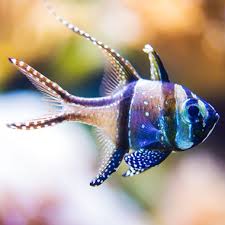The Mystery of the Dragon Symbol in Ancient Cultures: Unraveling the Origins and Significance

The dragon, a mythical creature that has captured the imagination of civilizations for centuries, stands as one of the most enduring symbols in world mythology. With its majestic and fearsome appearance, the dragon has become a prominent figure in the folklore, art, and literature of many ancient cultures. Despite its widespread presence across different regions of the world, the true origins of the dragon symbol remain a subject of fascination and mystery. How did the concept of the dragon come into being, and why did it emerge in various ancient cultures with similar traits, despite the lack of direct contact between them?
In this article, we will delve into the enigmatic origins of the dragon figure in ancient cultures. We will explore the various interpretations of the dragon symbol, its evolution, and its significance in the ancient world. From China to Mesopotamia, from Greece to the Americas, the dragon has played an important role in shaping the mythologies and spiritual beliefs of diverse societies. Join us as we unravel the mystery behind the formation of the dragon symbol in ancient cultures and its continued relevance in modern times.
The Dragon in Ancient China: A Symbol of Power and Protection
In Chinese culture, the dragon is not merely a mythological beast; it is a powerful symbol of the emperor, strength, and auspiciousness. The Chinese dragon, known as “Long” (龙), is often depicted as a serpentine creature with the body of a snake, the claws of an eagle, and the antlers of a deer, making it one of the most unique and distinctive dragons in the world.
Origins of the Chinese Dragon
The origins of the Chinese dragon are closely tied to the early agricultural society in China. The dragon was associated with water and rainfall, and in ancient China, water was a vital force for crop growth and survival. As a result, the dragon came to symbolize the control of water, which made it a guardian deity of rivers, lakes, and the sea. Ancient Chinese texts and artifacts from the Shang Dynasty (1600–1046 BCE) depict dragon-like creatures in their art and symbolism, but the true formation of the Chinese dragon as a central cultural symbol is thought to have evolved during the Zhou Dynasty (1046–256 BCE).
According to some historical accounts, the Chinese dragon may have originated from early totemic animals or spirits associated with clan ancestors. As tribes settled in the fertile regions of China, the dragon gradually took on a more divine and protective role. The association of the dragon with the emperor, as a symbol of imperial power and authority, solidified its position as the central figure in Chinese cosmology and governance.
Symbolism of the Chinese Dragon
In Chinese mythology, the dragon is considered to be a benevolent and auspicious creature, bringing good luck, prosperity, and protection. Unlike the Western dragon, which is often portrayed as a menacing creature, the Chinese dragon embodies harmony and balance. It is associated with the element of water, the cycles of nature, and the movement of celestial bodies. The dragon is a symbol of the emperor’s mandate to rule, with the emperor being referred to as the “Son of Heaven” and the dragon as the divine symbol of his authority.
One of the most iconic representations of the Chinese dragon is the dragon dance, a traditional performance during festivals like the Chinese New Year. The dragon dance, performed by a team of dancers carrying a long dragon puppet, is believed to bring good fortune and drive away evil spirits. The dragon also plays a central role in other cultural practices, such as dragon boat races, where the long, narrow boats are paddled by teams of athletes in competition, symbolizing strength, teamwork, and the pursuit of victory.
The Dragon in Ancient Mesopotamia: A Symbol of Chaos and Destruction
In the ancient civilizations of Mesopotamia, the dragon took on a very different role compared to the benevolent creatures of Chinese mythology. The dragons of Mesopotamian cultures, such as the Sumerians, Babylonians, and Assyrians, were often depicted as fierce, destructive beings associated with chaos, conflict, and divine punishment.
The Dragon in Sumerian and Babylonian Mythology
In Sumerian and Babylonian mythology, the dragon is often portrayed as a monstrous beast that opposes the gods and heroes. One of the most famous dragons in Mesopotamian mythology is Tiamat, the primordial goddess of chaos in the Babylonian creation myth, the “Enuma Elish.” Tiamat is depicted as a dragon-like creature with the body of a serpent, and she embodies the chaotic forces of the primordial ocean. According to the myth, Tiamat’s defeat by the god Marduk marks the victory of order over chaos, establishing the cosmos as a structured and harmonious universe.
The dragon, or serpent, in this context, represents the forces of destruction and disorder. In Mesopotamian beliefs, dragons were often linked to the underworld and the forces that threatened the stability of the divine order. The image of the dragon as a dangerous and chaotic force persisted throughout the ancient Near East, where it symbolized the cosmic struggle between good and evil.
The Dragon in Assyrian Art
The Assyrians, known for their highly detailed and symbolic art, also depicted dragons in their reliefs and sculptures. One of the most famous representations of the dragon in Assyrian art is the depiction of the dragon-headed serpent, which was believed to represent a divine protector of the king. In Assyrian myth, dragons were often portrayed as creatures that could be tamed or defeated by the gods or kings, symbolizing the triumph of order over disorder.
The Dragon in Ancient Greece and Rome: A Creature of Wisdom and Guardianship
In ancient Greece and Rome, dragons took on various roles, often as guardians of sacred places or as symbols of wisdom and power. Unlike the dragons of Mesopotamia, which were often destructive, the dragons of Greek and Roman mythology were typically seen as more neutral creatures, serving as protectors or challenges for heroes to overcome.
The Greek Dragon: A Guardian of Knowledge
In Greek mythology, the dragon was frequently associated with wisdom and knowledge. One of the most famous dragons in Greek mythology is Ladon, the serpent-like creature that guarded the golden apples in the Garden of the Hesperides. Ladon was a symbol of the barrier between mortals and divine knowledge. The hero Heracles, as part of his Twelve Labors, was tasked with stealing the golden apples, and he had to defeat Ladon in order to complete his quest.
In addition to Ladon, the Greek myth of Jason and the Argonauts also features a dragon that guards the golden fleece. The dragon in this story is another example of a guardian creature that must be overcome in order to gain access to divine treasures. These dragons, while fierce, were not evil but were instead portrayed as powerful protectors of sacred or valuable objects.
The Roman Dragon: Symbol of Power and Authority
In Roman mythology, dragons were sometimes associated with divine power and authority. The Roman emperor, for example, was often depicted with a serpent or dragon as a symbol of his divine right to rule. The dragon, like the eagle, was considered a powerful emblem of imperial strength and protection.
The Dragon in Ancient Mesoamerica: A Symbol of Creation and Duality
In the ancient civilizations of Mesoamerica, such as the Aztecs and the Mayans, the dragon-like figure was also an important cultural symbol. The Mesoamerican dragon was typically a feathered serpent, known as “Quetzalcoatl” in Aztec mythology.
Quetzalcoatl: The Feathered Serpent God
Quetzalcoatl, the feathered serpent god, was one of the most important deities in the Aztec pantheon. He was associated with the wind, rain, and the fertility of the earth, as well as with wisdom and learning. The feathered serpent symbolized the dual nature of creation—earthly and divine, earthly and celestial. Quetzalcoatl was considered a god of creation, civilization, and the arts, and he played a central role in the creation myth of the Aztec people.
The feathered serpent was also associated with the cycles of life and death, symbolizing the ongoing process of renewal and transformation. Quetzalcoatl’s image was often depicted in art and sculpture, with his serpent body adorned with vibrant feathers, signifying the connection between the earthly realm and the divine.
The Universal Dragon: A Common Symbol Across Cultures
Despite the cultural differences in how dragons are portrayed, there are striking similarities in the symbolic roles that dragons play across ancient cultures. The dragon often serves as a guardian or protector, a force of creation or destruction, or a symbol of power and wisdom. Whether depicted as a benevolent creature, a chaotic monster, or a guardian deity, the dragon has been an enduring figure in human culture for thousands of years.
The widespread presence of the dragon across cultures suggests that the dragon may represent universal human themes such as the struggle between good and evil, the quest for knowledge and wisdom, and the desire for protection and prosperity. The dragon, as a symbol, transcends cultural boundaries, making it one of the most fascinating and enduring mythical creatures in human history.
Conclusion: The Enduring Legacy of the Dragon in Ancient Cultures
The mystery of the dragon’s origins and its significance in ancient cultures continues to captivate scholars, artists, and mythologists. From the benevolent dragons of China to the chaotic serpents of Mesopotamia, the dragon has evolved into a multifaceted symbol that reflects humanity’s deepest fears, desires, and aspirations. Whether as a protector of sacred knowledge, a symbol of power and authority, or a force of creation and destruction, the dragon remains one of the most enduring and powerful mythological creatures in human history. The mystery of its formation and significance in ancient cultures may never be
fully unraveled, but its legacy lives on in the collective imagination of humanity.

